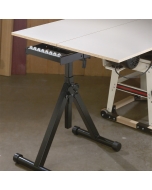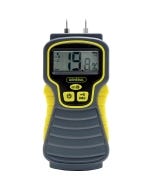Dealing with Boards Gapping in Center
I have prepared boards for jointing edge-to-edge by careful sawing, jointing on a router table and most recently with a jointer. In all cases, I get boards that join with a noticeable gap in the center. I'm certainly doing something wrong, but what? - Richard
Tim Inman: Since the ends typically shrink away from the glue line, I have always taught (and was taught) to have a goal of a little clearance in the center of the boards. The idea is that this will compensate for the end shrink. The clearance should be no more than a few thousandths, though. An ordinary playing card is about 12 thousandths thick. If you can slip a playing card in your gap, it is too open. A sheet of copy paper, and you're good to go.
To be in control of the work, though, analyze your tools and your technique. Are you using infeed/outfeed tables or guides that are two-pieces? Are they in line? Are you exerting more pressure in the middle of the run? I'm guessing this is more technique than tools. Try some test pieces to see if you can produce the fault one way or the other.
Chris Marshall: Whether you're edge jointing on a router table or with a dedicated jointer, the fence facings and infeed/outfeed tables need to be co-planar in order to produce flat edges. And, the cutter(s) must be exactly flush with the outfeed fence or table. But, since you say you are having similar problems with both machines, one other possibility is that your boards are "sprung" (curved on the edges) to begin with. Is your lumber sufficiently dry (6 percent to 8 percent moisture content) and acclimated to your shop humidity level? Is it really narrow, in which case you might be pushing the stock flat when you make the jointing pass, but it's simply returning to a sprung shape as soon as it leaves the cutters? Try taking gentler passes to start with, so the cutters knock off the ends but not the middle. Once the ends are in line with the center, you should be able to continue flattening without perpetuating a sprung edge. One other thing: it's tough to flatten the edges of long stock (say, 6 ft. or more). Practice on shorter lumber and see if your luck changes. It probably will.
Keep the inspiration coming!
Subscribe to our newsletter for more woodworking tips and tricks




